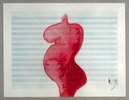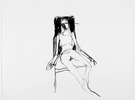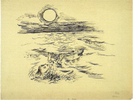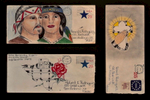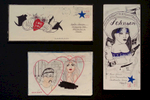Exhibition Archive - Akim Monet Curatorial 2011-2023
- Dallas (2022-)
- Los Angeles (2019-2021)
- Berlin (2011-2018)
- Mythology & Science (Fall 2017 & Spring 2018)
- Curses, Blasphemies, Lamentations: Goya & Rodin (Spring 2017)
- Homage to Auguste Rodin (Winter 2017)
- Der Kandidat (Fall 2016)
- Bridge over chaos (Spring 2016)
- "1932" Rare Photographs by George Grosz (Winter 2016)
- Musee Rodin Artgeneve (Winter 2016)
- Rodin Rilke Beuys (Fall 2015)
- Auguste Rodin: an expressionist eye (Spring 2015)
- The Animals' Conference (Fall 2014 & Winter 2015)
- The Hand of God (Spring 2014)
- Women (winter 2014)
- Dance of the seven veils (Fall 2013)
- Abdulnasser Gharem (Spring 2013)
- Kirchner - De Kooning (Winter 2013)
- Sex is kicking death (Fall 2012)
- The Sacred Heart (Spring 2012)
- The Concrete & the Mystical (Winter 2012)
- Fertility (Fall 2011)
- Installations views
- Mythology & Science
- Curses, Blasphemies, Lamentations: Goya & Rodin
- Homage to Auguste Rodin
- Der Kandidat
- Bridge over chaos
- "1932" Rare Photographs by George Grosz
- Rodin Rilke Beuys
- Auguste Rodin: an expressionist eye
- The Animals' Conference
- The Hand of God
- Women
- Dance of the seven veils
- Abdulnasser Gharem
- Kirchner - De Kooning
- Sex is kicking death
- The Sacred Heart
- The Concrete & the Mystical
- Fertility
- Berlin exhibition program
- Musée Rodin Partnership (external)
- Akim Monet Fine Arts (external)
- Videos
- Press
- Publications - Texts - Press releases
- Publications
- Texts & Press releases
- Wings of Desire (Press release)
- Of Mice & Men (Press release)
- Open letter to Donald Trump (Letter)
- Disruptive selection (Press release)
- Goodbye Berlin, hello Los Angeles (Letter)
- Mythology & Science (Press release)
- Curses, Blasphemies, Lamentations: Goya & Rodin (Press release)
- Homage à Auguste Rodin (Press release)
- Der Kandidat (Press release)
- Bridge over chaos (Press release)
- Bridge over chaos (Exhibition notes)
- Bridge over chaos (Listof works)
- "1932" Rare Photographs by George Grosz (Press release)
- Musée Rodin at Artgeneve2016 (Press release)
- Rodin Rilke Beuys (Press release)
- Auguste Rodin: an expressionist eye (Press release)
- The Animals' Conference (Press release)
- Hand of God (Press release)
- Dance of the seven veils (Press release)
- Gharem in London: Fall 2013 (Press release)
- Gharem in Venice: Summer 2013 (Interview)
- Gharem in Berlin: Spring 2013 (Press release)
- Sacred Heart Interview
- Fertility essay
- About - Legal - Contact
- Blog (external)
- Newsletter sign-up
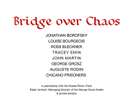
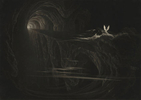
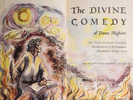




![Auguste RODIN (1840-1917)Bronze100,5 x 73 x 49 cmCast in 2015 by Susse Fondeur, ParisInscribed A. Rodin, © by Musée Rodin and numbered IV/IV, one of four examples numbered in roman numerals, dated and stamped with foundry markPROVENANCEMusée Rodin, ParisOTHER CASTS IN PUBLIC COLLECTIONSSéoul, Rodin Gallery, 2/8 cast in 1990Shizuoka, Prefectural Museum of Art, acquired in 1992, II/IV cast in 1991São Paulo, State Pinacothèque, acquired in 1995, 3/8, cast in 1991Salvador de Bahia, musée Rodin, acquired in 2002, 6/8LITERATUREAntoinette Le Normand-Romain, The bronzes of Rodin, catalogue of works in the Musée Rodin, vol. II, Paris, 1997, p. 568AUTHENTICATIONA certificate of authenticity, signed by the Director of the Musée Rodin, is given to every purchaser of an original bronze by Auguste RodinThis work will be included in the forthcoming Auguste Rodin catalogue critique de l'oeuvre sculpté currently being prepared by the Comité Auguste Rodin at Galerie Brame et Lorenceau under the direction of Jérôme Le BlayNOTESThe Shade officially appeared when Rodin chose to place at the top of The Gates of Hell three identical figures that were cast from the same mold and assembled on a system of repetitive juxtaposition. According to Camille Mauclair, these figures represent the recently deceased who stoop in terror as they discover the crowd of damned into which they are about to be thrown.In Dante’s poem (the Divine Comedy is the major source of reference for The Gates of Hell), the Three Shades warn the newly arrived with this terrible sentence: {quote}Lasciate ogni speranza, voi ch'entrate{quote}, most frequently translated as {quote}Abandon all hope, ye who enter here.{quote}A few days after the opening of the 1900 exhibition at the Pavillon de l’Alma, the group, which was first exhibited at the foot of The Gates of Hell, returned to the top of the composition, of which it constitutes the indispensable crowning.The Shade was enlarged in 1901 by Henri Lebossé who took “exceptional” care in his work, as he perceived the figure to be “perhaps the most important piece of sculpture of [Rodin’s] career” (quoted in Antoinette Le Normand-Romain, The Bronzes of Rodin: Catalogue of Works in the Musée Rodin, Paris, 2007, vol. II, p. 570). By isolating a fragment of the figure, Torse de l’Ombre throws a new light on the striking pose of Les Ombres, recalling the venerated ruins of Greek and Roman antiquity. In its contrived, twisted pose, Torse de l’Ombre specifically resonates with the Torse du Belvedère, hinting at Rodin’s challenging relationship with the great tradition of classical sculpture.The Shades gave birth to autonomous sculptures. Through its movement, the Torso of the Large Shade somehow announces in a metonymical manner the global axis of the sculpture, agitated in a painful contraposto. Even as it references the antique fragment so dear to Rodin, it is clearly the influence of Michelangelo that is materialized in this subject.](http://cdn.lightgalleries.net/4cf3e4235c858/images/SbSG-Rodin---Rodin_Torse-de-la-grande-ombre_01-corr_WB_WB_thumb-1.jpg)
